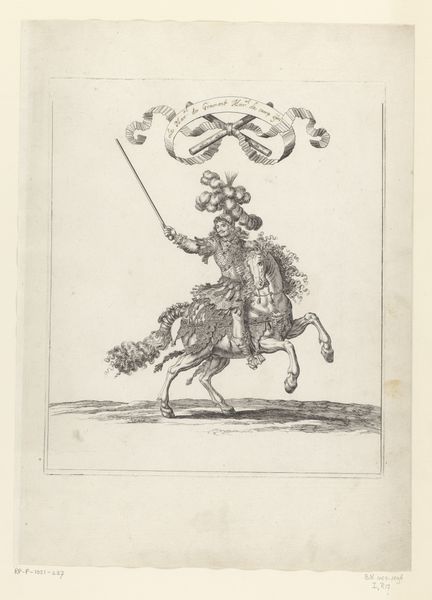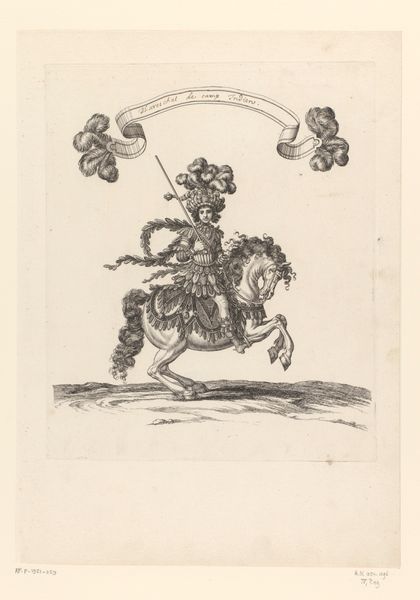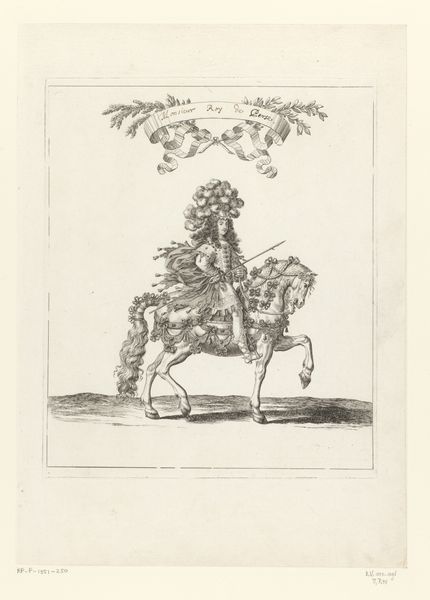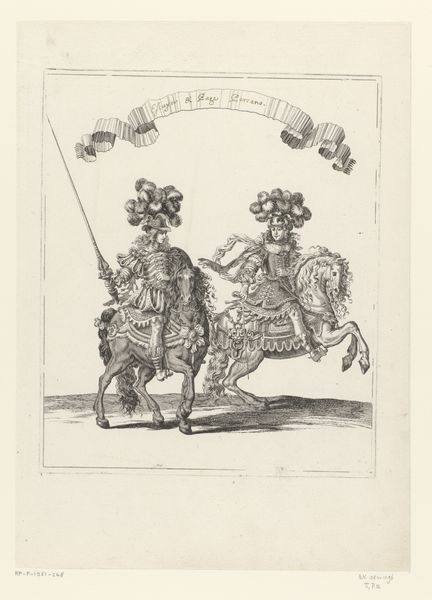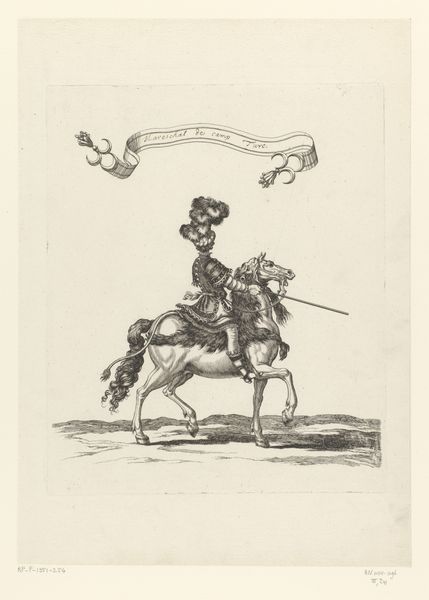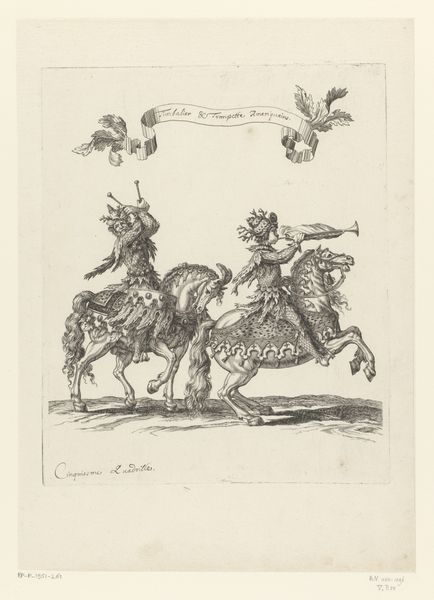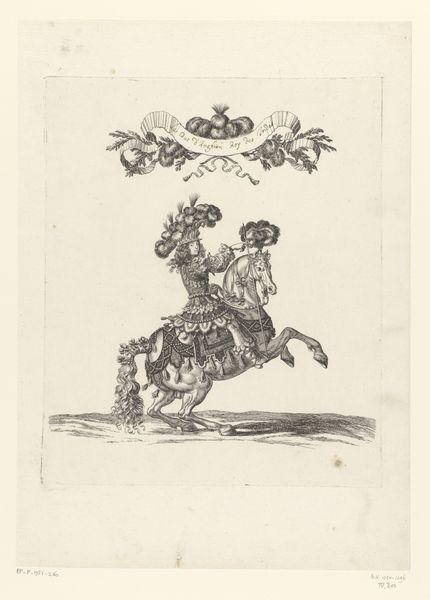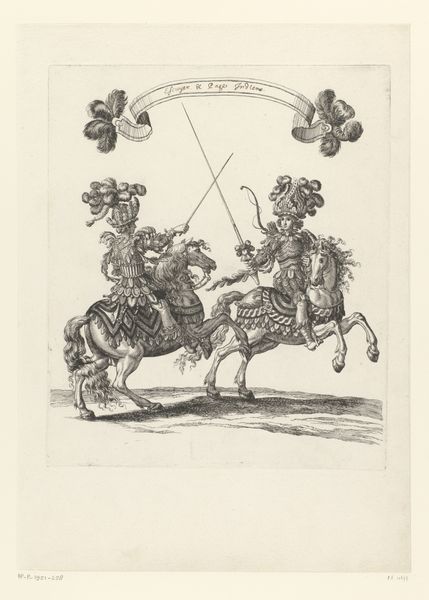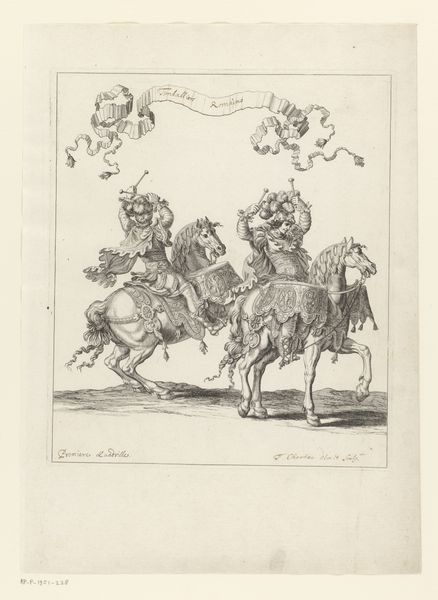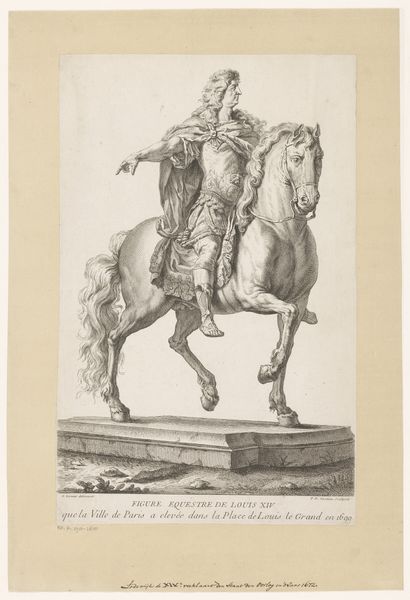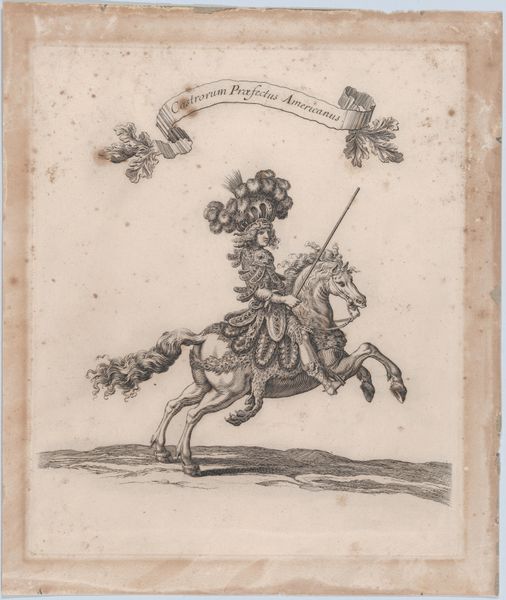
drawing, print, engraving
#
portrait
#
drawing
#
baroque
# print
#
pen sketch
#
old engraving style
#
landscape
#
figuration
#
horse
#
line
#
history-painting
#
engraving
Dimensions: height 309 mm, width 261 mm
Copyright: Rijks Museum: Open Domain
François Chauveau etched this depiction of a man on horseback in Roman costume. The plumed helmet and the rearing steed evoke classical antiquity, symbols of power, conquest, and the glory of the Roman Empire. The image is part of a long line of equestrian portraits throughout history, and reminds us of the Marcus Aurelius statue in Rome, where the emperor rides high on horseback. It conveys the ruler's authority and connection to the divine. Here, we see it echoed through the ages, a cultural memory revived in Chauveau's rendering, where the rider, although not an emperor, still embodies strength and nobility. The rearing horse is particularly interesting. From ancient friezes to Renaissance paintings, it represents vitality, and untamed energy. Psychologically, such a symbol speaks to our inner drives, the subconscious desire for mastery, and the emotional resonance of these symbols. The image taps into the collective memory of triumph, a motif endlessly revisited, each time colored by its era.
Comments
No comments
Be the first to comment and join the conversation on the ultimate creative platform.

